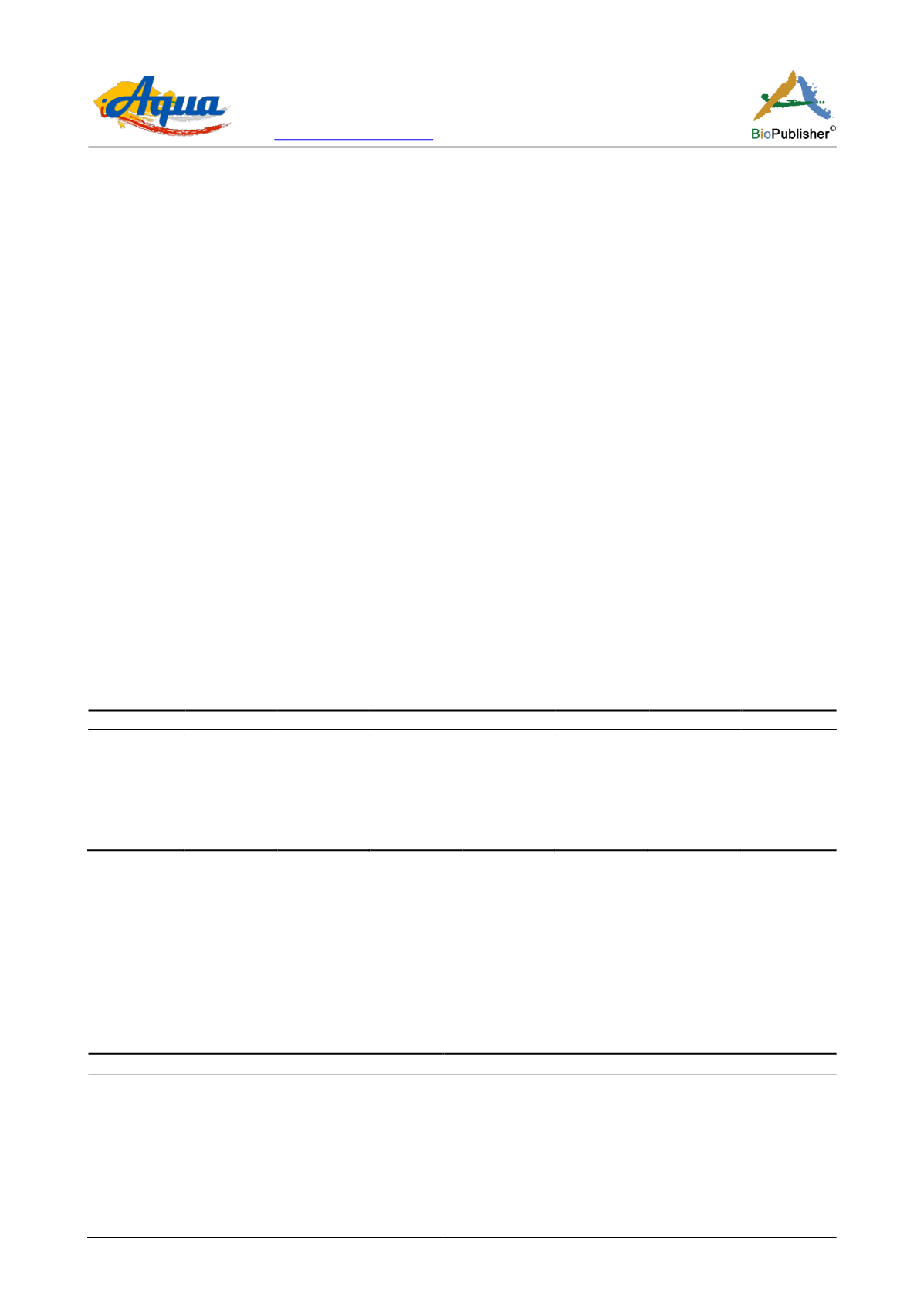
International Journal of Aquaculture, 2017, Vol.7, No. 2, 9
-
14
13
from 200 mg/L to 402 mg/L. The values were higher during the dry season than wet season (p < 0.05) but there
was no significant difference (p > 0.05) between culture systems.
Nitrate
: Nitrate is a form of nitrogen and a vital nutrient for growth, reproduction and the survival of organisms.
Santhosh and Singh (2007) described the favourable range of 0.1 mg/L to 4.0 mg/L in fish culture water. The
results indicated high level of nitrate during the dry season. There was significant difference (p < 0.05) between
seasons (values were higher during the dry season than the wet seasons) and nitrate level was not significantly
different (p > 0.05) between culture systems.
Nitrite:
Nitrite can be termed as an invisible killer of fish because it oxidizes haemoglobin to methemoglobin in
the blood, turning the blood and gills brown and hindering respiration. It also damages the nervous system, liver,
spleen and kidneys of the fish (Bhatnagar and Devi, 2013). The ideal and normal measurement of nitrite is zero in
any aquatic system. Stone and Thomforde suggested that the desirable range is 0 – 1 mg/L NO
2
and acceptable
range less than 4 mg/L NO
2
. Nitrite content recorded in this study was between 0.01 mg/L and 0.5 mg/L and 0.04
mg/L and 0.16 mg/L for EPs and CTs, respectively.
Linear correlations between water quality variables revealed that due to inter-correlation of variables, their linear
combinations were constructed by applying principal component analysis. Ammonia and nitrate had positive
correlation and significant at p < 0.05. A unit increase in the value of Nitrate will result in 0.55 increases in the
value of ammonia. pH had positive correlation with temperature, TDS and nitrite but they were not significant
(Table 6). Comparison of mean of water quality in different farms revealed that nitrite values obtained in OOF
and KFF farms during the wet seasons were significant at p < 0.05 (Table 5). During the dry season, water quality
among the farms operating earthen pond systems were not significantly different (p > 0.05). There was no
significant difference (p > 0.05) in water quality parameters in farms operating concrete tank systems during the
wet and dry seasons (Table 5).
Table 6 Linear correlations between water quality variables
Variables
pH
Temp
DO
TDS
Nitrite
Nitrate
Ammonia
pH
1.00
.25
.13
.37
.08
-.26
-.41
Temp
.25
1.00
.28
-.13
.35
-.38
-.21
DO
.13
.28
1.00
-.16
-.20
-.02
-.15
TDS
.37
-.13
-.16
1.00
.10
.22
-.18
Nitrite
.08
.35
-.20
.10
1.00
.37
.29
Nitrate
-.26
-.38
-.02
.22
.37
1.00
.55*
Ammonia
-.41
-.21
-.15
-.18
.29
.55*
1.00
Note: Marked correlations are significant at p <0.05
4 Conclusions
The study on the effect of season of the year on the physico-chemical properties of pond water revealed that; pH,
DO, TDS, nitrate and nitrite were not affected by culture systems and season of the year. Temperature, ammonia
and TDS were significantly different among culture systems and season of the year. The values of water quality
parameters obtained in this study were within the recommended water quality (Table 7) parameters for warm
water fish (Ajani et al., 2011).
Table 7 Recommended water quality requirement for the African Catfish (
Clarias gariepinus
)
Parameters
Recommended level
Dissolved Oxygen
> 4 ppm
pH
6.5 - 9.0
Temperature
20
o
C – 30
o
C
Nitrite
<0.25 ppm
Ammonia
<0.05 ppm
Water Hardness
50 -300 ppm
Alkalinity
50 -200 ppm
Turbidity
30 cm depth


